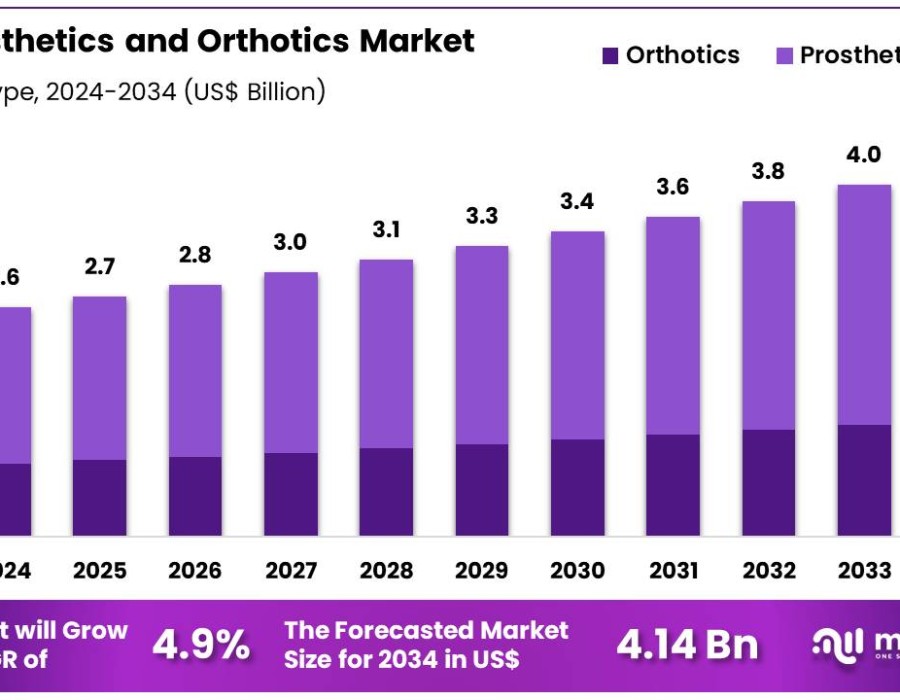The U.S. prosthetics and orthotics market is projected to reach USD 2.57 billion by 2024 and grow to USD 4.14 billion by 2034 at a CAGR of 4.9%. Key growth drivers include the rising incidence of chronic conditions such as diabetes and vascular diseases, which increase the need for mobility aids. An aging population also contributes significantly, as older adults increasingly rely on orthotic devices for support and injury prevention. Technological innovations—such as smart sensors and custom-fit designs—have enhanced device comfort, functionality, and user adoption. Supportive regulatory policies from bodies like the FDA further promote innovation and safety. Additionally, access to care is improving through programs like Medicare, Medicaid, and Veterans Affairs, while growing awareness around disability inclusion and expanding telehealth services continue to boost market demand and long-term rehabilitation outcomes.
![]()
Key Takeaways
- Orthotics Lead the Market by Type: An expert notes that orthotics dominate the market with 68.3% share, driven by aging populations and rising musculoskeletal and diabetic-related mobility issues.
- High Demand for Affordable Conventional Prosthetics: A market analyst explains that conventional prosthetics hold 43.8% share due to their cost-effectiveness, durability, and usability in areas with limited technology access.
- Hospitals Dominate as Key End Users: Industry insiders report that hospitals hold 45.8% market share, offering full prosthetic services—from fittings to therapy—amid rising trauma and chronic condition cases.
Emerging Trends
- Adoption of Smart Technologies: The market is seeing a shift toward smart prosthetics and orthotics that use sensors, artificial intelligence, and machine learning. These advanced devices can adapt in real-time to users’ movements and environments, offering better comfort and functionality.
- Focus on Lightweight Materials: Modern devices are being developed with lighter and stronger materials. These help improve the wearability and durability of the prosthetics and orthotics, making them easier to use daily.
- Growth in Pediatric and Geriatric Care: With more children born with limb differences and a growing aging population facing mobility issues, the need for tailored prosthetics and orthotics for these groups is increasing. Devices are being designed specifically for different age groups and activity levels.
- Rise in Telehealth and Remote Services: The market is seeing the introduction of remote fitting, adjustment, and monitoring solutions. These digital health tools improve access, especially for people living in remote or underserved areas.
View more: https://market.us/report/us-prosthetics-and-orthotics-market/





Comments